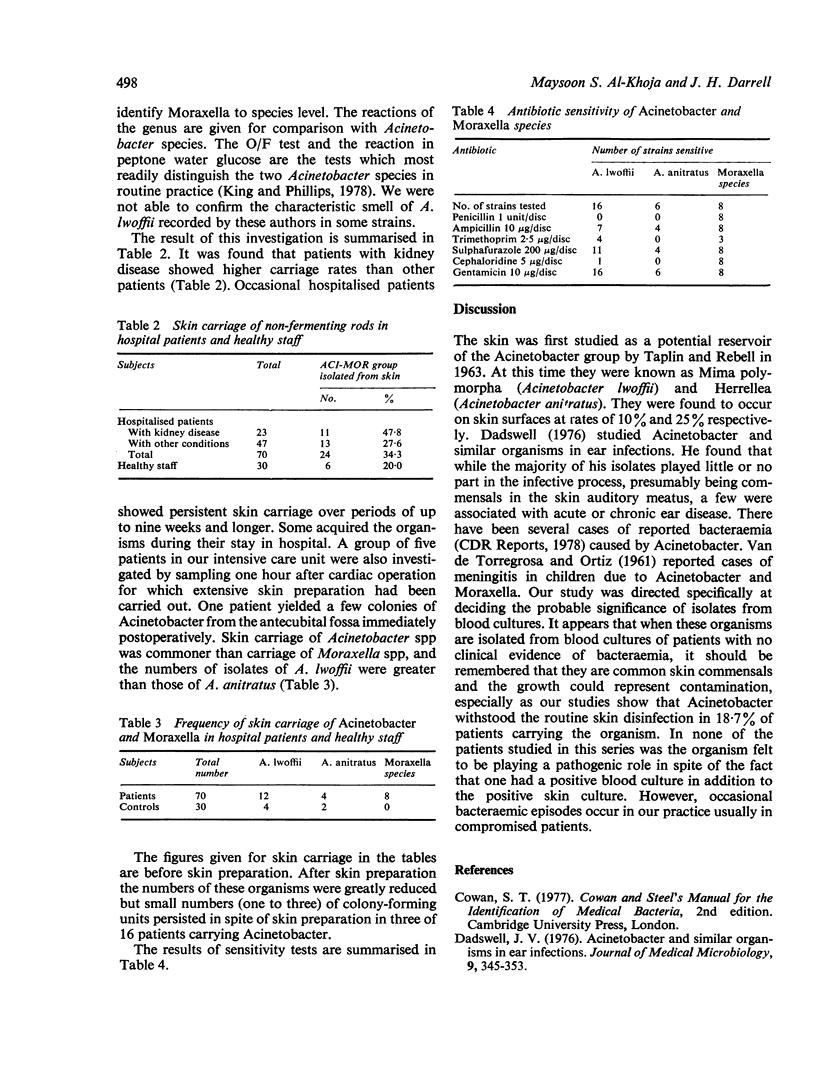Abstract
A study was made of the flora of the skin in hospital inpatients and healthy people to demonstrate the presence of non-fermenting Gram-negative rods of the Acinetobacter and Moraxella group. These organisms were found to be present on the skin of 34.3% of inpatients and occurred even more commonly in those patients with kidney disease. It was also present on the skin of 20% of a group of healthy members of staff. This rather high rate of skin carriage is thought to account for the not infrequent occurrence of this organism in blood cultures.
Full text
PDF


Selected References
These references are in PubMed. This may not be the complete list of references from this article.
- DE TORREGROSA M. V., ORTIZ A. Severe infections in children due to rare gram-negative bacilli (Mima polymorpha and Bacillus anitratum). J Pediatr. 1961 Jul;59:35–41. doi: 10.1016/s0022-3476(61)80206-0. [DOI] [PubMed] [Google Scholar]
- Dadswell J. V. Acinetobacter and similar organisms in ear infections. J Med Microbiol. 1976 Aug;9(3):345–353. doi: 10.1099/00222615-9-3-345. [DOI] [PubMed] [Google Scholar]
- King A., Phillips I. The identification of pseudomonads and related bacteria in a clinical laboratory. J Med Microbiol. 1978 May;11(2):165–176. doi: 10.1099/00222615-11-2-165. [DOI] [PubMed] [Google Scholar]
- TAPLIN D., ZAIAS N. THE HUMAN SKIN AS A SOURCE OF MIMA-HERELLEA INFECTIONS. JAMA. 1963 Dec 7;186:952–955. doi: 10.1001/jama.1963.63710100030023a. [DOI] [PubMed] [Google Scholar]


